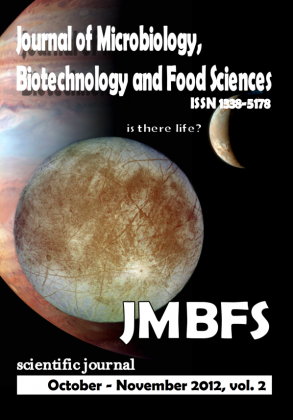ESTIMATION OF EXTRACELLULAR LIPOLYTIC ENZYME ACTIVITY BY THERMOPHILIC BACILLUS SP. ISOLATED FROM ARID AND SEMI-ARID REGION OF RAJASTHAN, INDIA
Keywords:
Thermophiles, Thermostable enzyme, Lipolytic enzyme, Arid region, Semi-arid region, Bacillus sp.Abstract
Thermophilic organisms can be defined as, micro-organisms which are adapted to survive at high temperatures. The enzymes secreted by thermophilic bacteria are capable of catalyzing biochemical reactions at high temperatures. Thermophilic bacteria are able to produce thermostable lipolytic enzymes (capable of degradation of lipid) at temperatures higher than mesophilic bacteria. Therefore, the isolation of thermophilic bacteria from natural sources and their identification are quite beneficial in terms of discovering thermostable lipase enzymes. Due to great temperature fluctuation in hot arid and semi-arid region of Rajasthan, this area could serve as a good source for new thermophilic lipase producing bacteria with novel industrially important properties. The main objective of this research is the isolation and estimation of industrially important thermophilic lipase enzyme produced by thermophilic bacteria, isolated from arid and semi-arid region of Rajasthan. For this research purpose soil samples were collected from Churu, Sikar and Jhunjunu regions of Rajasthan. Total 16 bacterial strains were isolated and among only 2 thermostable lipolytic enzyme producing bacteria were charcterized. The thermostable lipolytic enzyme was estimated by qualitative and quantitative experiments. The isolates were identified as Bacillus sp. by microscopic, biochemical and molecular characterization. The optimum enzyme activity was observed at pH 8, temperature 60°C and 6% salt concentrations at 24 hrs time duration. Lipolytic enzyme find useful in a variety of biotechnological fields such as food and dairy (cheese ripening, flavour development), detergent, pharmaceutical (naproxen, ibuprofen), agrochemical (insecticide, pesticide) and oleochemical (fat and oil hydrolysis, biosurfactant synthesis) industries. Lipolytic enzyme can be further used in many newer areas where they can serve as potential biocatalysts.Downloads
Download data is not yet available.
Downloads
Published
2012-10-01
How to Cite
Gaur, D., Kumar Jain, P., Singh Sisodia, Y., & Bajapai, V. (2012). ESTIMATION OF EXTRACELLULAR LIPOLYTIC ENZYME ACTIVITY BY THERMOPHILIC BACILLUS SP. ISOLATED FROM ARID AND SEMI-ARID REGION OF RAJASTHAN, INDIA. Journal of Microbiology, Biotechnology and Food Sciences, 2(2), 619–633. Retrieved from https://office2.jmbfs.org/index.php/JMBFS/article/view/7169
Issue
Section
Microbiology
License
Copyright (c) 2012 Deeksha Gaur, Pankaj Kumar Jain, Yamini Singh Sisodia, Vivek Bajapai

This work is licensed under a Creative Commons Attribution 4.0 International License.
All papers published in the Journal of Microbiology, Biotechnology and Food Sciences are published under a CC-BY licence (CC-BY 4.0). Published materials can be shared (copy and redistribute the material in any medium or format) and adapted (remix, transform, and build upon the material for any purpose, even commercially) with specifying the author(s).

